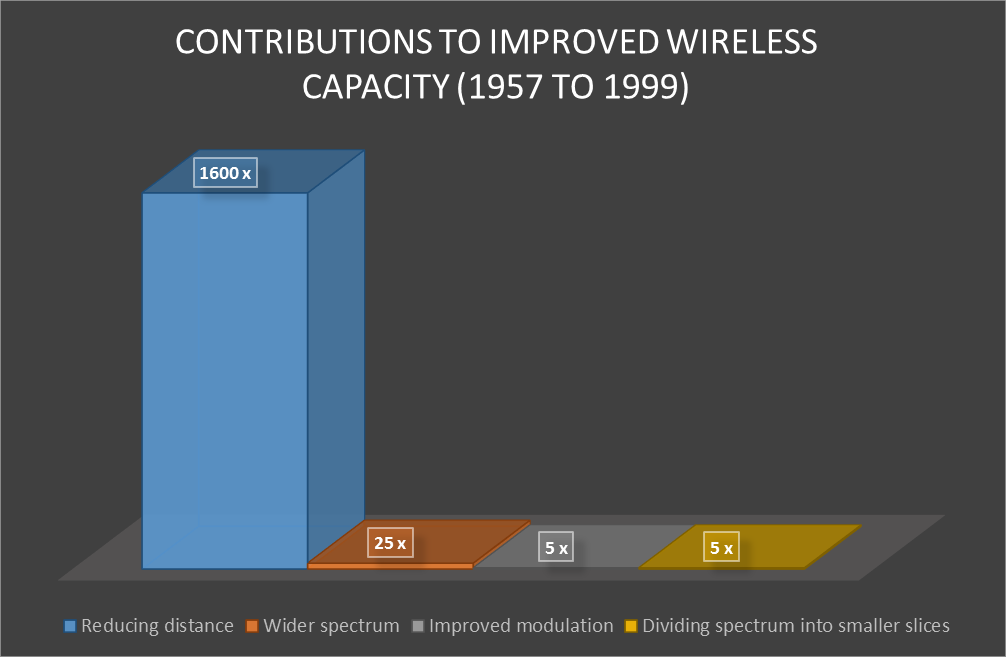Wireless Data Demand Predictions
By jeffcadams|2014-10-31T23:25:51+00:00September 12th, 2014|Wireless|0 Comments
Take away: The vast majority of historical gains achieved in data capacity have been accomplished by reducing or confining the coverage size and/or transmit distance. This is driven by physics—there is a limit to how many bits/Hz can be squeezed out of a single wireless stream (Shannon’s Law). The best way to increase capacity is to increase the density of access points. This combined with the the fact that 70% of all cell phone sessions begin and end in a building3 (increasing to 80% by 2016), with demonstrations showing greatest capacity gains for indoor cellular deployments that are overlaid within conventional macro cells, supports the strategic use of in-building DAS and heterogeneous networks to meet exponentially increasing data demands.
[1] M. S. Alouini and A. J. Goldsmith, “Area Spectral Efficiency of Cellular Mobile Radio Systems,” IEEE Trans. Vehic. Tech., vol. 48, no. 4, July 1999, pp. 1047–66.
[2] X. Tao, X. Xu, and Qimei Cui, “An Overview of Cooperative Communications”, IEEE Communications, June 2012, pp. 65-71.
[3] “LTE Amplify and Forward Relaying for Indoor Coverage Extension”, Thomas Wirth, Lars Thiele, Thomas Haustein, Oliver Braz and Jörg Stefanik, Vehicular Technology Conference Fall (VTC 2010-Fall), 2010 IEEE 72nd, Sept. 2010

